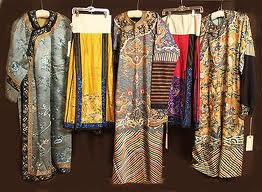Stagnant supporting industries hamper apparel export
Tuesday, August 13,2019
AsemconnectVietnam - Underdeveloped textile and dying supporting industries could pose a threat to the future export of the apparel sector amid the freshly-signed EU-Vietnam Free Trade Agreement, insiders have warned.
The EU is now the second largest importer of Vietnamese apparel products. The EU-Vietnam Free Trade Agreement (EVFTA), signed by both sides in late June, is thought to further boost the garment and textile sector’s exports to the trading bloc.
Last year, Vietnam earned US$5.6 billion from its garment and textile exports to Europe. Despite this large income, it only accounted for just over 2 per cent of the bloc’s total apparel imports. Therefore, there exists a huge potential for Vietnamese apparel products to make inroads into the European market.
A great number of tariff lines will be slashed to 0 per cent under a seven-year tariff elimination roadmap set by the EVFTA. This would open up an array of export opportunities for the domestic apparel sector.
Luong Hoang Thai, head of the Multilateral Trade Policy Department under the Ministry of Industry and Trade, said the EU is the world’s largest market in terms of garment and textile trade.
The EVFTA will allow Vietnamese apparel products to penetrate more deeply into EU markets, with 77 per cent of tariff lines on garment and textile imports into the bloc to be reduced to 0 per cent right after the trade pact comes into force, while most of the remaining tariffs will also drop to 0 per cent over time.
However, the apparel sector could face a number of difficulties in optimizing the benefits arising from the EVFTA, as the industry has yet to satisfy requirements on product origin as local firms regularly import clothes and other materials from the markets which are not signatories of any FTA with the EU.
Vu Duc Giang, Chairman of the Vietnam Textile and Apparel Association, admitted that the sector has made only some simple outsourcing parts of the entire process. Hence, high standards on product origin pose a serious challenge for Vietnamese firms.
The most challenging issue emerges from the shortages of material supply, especially those in relation to the dying process, Giang claimed, noting that in order to make full use of EVFTA benefits, ministries, sectors, and localities must sketch out detailed plans to develop enterprises in a way they can handle the shortages.
The EVFTA requires that local exporters meet requirements regarding the origin of cloth. Given this, the domestic sector would fail to earn any benefits from the trade deal if it lacks made-in-Vietnam clothes to create products for export. Indeed, up to 90 per cent of the sector’s inputs have been imported from non-EVFTA countries, meaning these sources are not subjective to the cumulative rule of origin as prescribed in the EVFTA.
Nguyen Thi Thu Trang, head of the WTO and Integration Center under the Vietnam Chamber of Commerce and Industry, said that high origin standards as required by the EVFTA and other trade pacts would serve as a catalyst to attract further investment inflows into textile and dying industries, therefore helping ease the shortages of inputs.
She added that more attention should be paid to improving the quality of design and other processes in a bid to increase the added value of Vietnamese apparel products.
The domestic garment and textile sector looks to reap US$40 billion from exports throughout 2019. Of which, 42 per cent of the total exports are expected to come from the US, followed by EU markets with 21.5 per cent.
The establishment of stable supply chains is needed to untangle the existing bottlenecks. Market stability is another factor that will help to attract additional investment inflows and enable local firms to penetrate more deeply into the supply chain.
Source: VOV.VN
Banks to promote online lending through national population database access
Government support helps aquaculture industry weather difficulties
Vietnam business news June 5,2023
DAILY: Vietnamese pepper prices remained unchanged on June 5
DAILY: Vietnamese coffee prices remained unchanged on June 5
Reference exchange rate drops strongly at week’s beginning
Imports and exports of goods in May prospered, up by 5.3%
Vietnamese lychee, longan eye bigger market share in Singapore
May industrial production index inches up 2.2%
Automobile imports down in May
Vietnam to diversify rice export markets
Almost all banks cut 6-month deposit interest rate to below 8%/year
Agro-forestry-aquatic product exports likely to rebound in Q4: official
Reference exchange rate down 7 VND on June 2

Plan on implementing national strategy on climate change ...
Actively and effectively adapting, reducing vulnerability, loss and damage due to climate change; reduce greenhouse gas emissions ...Scheme on attracting, restructuring and improving quality ...
Urban development plan of Binh Phuoc province in a period ...
Plan on implementing Decision No. 327/QD-TTG dated March ...

Hung Kings Temple Festival 2023 kicks off
The Hung Kings Temple Festival 2023 and the Culture and Tourism Week of Ancestral Land 2023 kicked off in the northern province of Phu Tho ...Vietnam trounce Palestine at AFC U-17 Women's Asian ...
Phu Tho: Festival honours UNESCO intangible cultural ...
Saigontourist Group Food and Culture Festival 2023 opens
Vietnam’s top swimmer Huy Hoang to hold Vietnamese flag at ...



